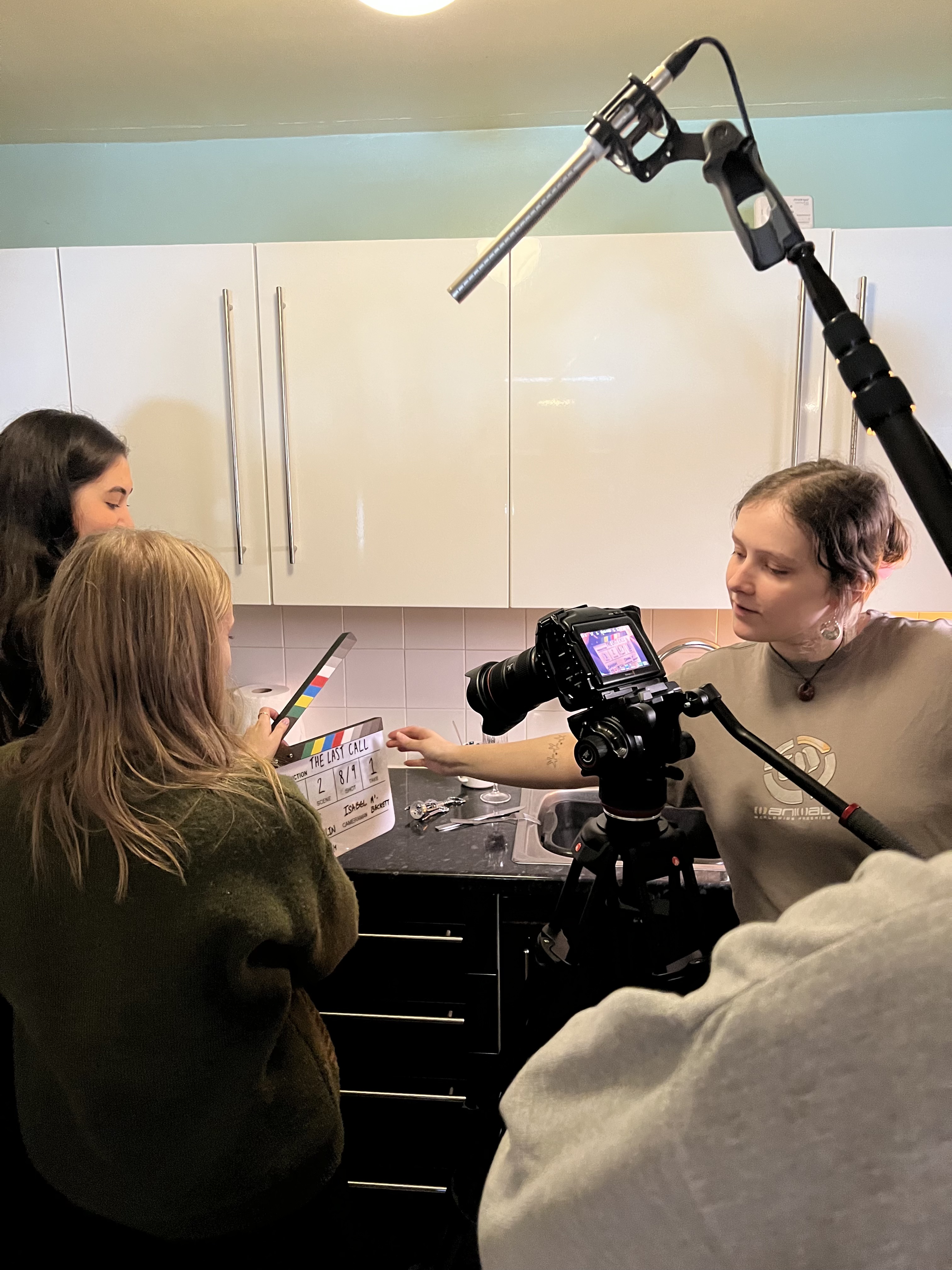Film
I chose not to do a dissertation for my final year at university as I felt the modules would be more beneficial in the future. I also wanted to use my extra time to gain valuable hands-on experience, like taking control of Theatre Society.
Filming our one-minute showcase was an eye-opening experience, it took six hours to film which gave me a real understanding of the time and attention to detail that is required on set. I’ll consider this if I ever decide to use multimedia in future projects. Every shot needed careful planning such as adjusting the camera angles and lighting as well as making sure there was continuity between each take. This whole process taught me the contrast between stage and screen performance, where multiple takes are necessary to get the perfect shot. It also reinforced the importance of collaboration and patience, as each team worked hard together to bring the vision to life, and I believe we successfully achieved this.


The Final Showcase:
https://www.youtube.com/watch?v=IVwmdv-XPx0
- Details
- Written by: Kimberley Gomersall
- Category: Film

This is short film shot in/around Bath in November 2024 - March 2025.
- Details
- Written by: Kimberley Gomersall
- Category: Film
Cinematic Breakdown!
What does the image composition tell you about the scene?
- Leading Lines – the human-made or natural lines lead to the focus of the image
- Symmetrical composition – two halves of the image are mirrors of each other
- Rule of Thirds – a guideline that places the subject in the left or right third of an image, leaving the other two-thirds more open
- Frame within a Frame – The character is positioned in the main subject, so it framed by something else within the scene like a silhouette
- Dynamic Symmetry – a set of vertical, horizontal and diagonal lines that can help create rhythm, movement and unity between characters
- Lights and Shadows – Light brightens the image and shadow can bring attention to a certain part of the composition adding to the drama
- Patterns & Textures – Gives complexity to a composition
- Negative Space – minimalism emphasises the subject as well as the empty space around the subject
- Triangle composition – creates balance and harmony by arranging the characters into an overall geometric shape
- Fibonacci spiral – a balanced structure with a series of squares equal to the Fibonacci sequence, connecting the corners of the squares with a curve
- Centre Dominant Eye – focus on the dominant eye of your subject
- Golden Triangle composition – to give a scene and subject a more diagonal shape
- Tonal Contrast – the difference of tones between the elements of an image is distinct (light and colour)
- Truck shot – the camera moves along a fixed point and the motion goes from side to side
- Long shot - generally shows the full length of any featured characters
- Colour contrast – combine a bright colour with a neutral
- B-Rolls – All of the shots that don’t include the principal subjects interacting with each other or talking to the camera
- Establishing shot – signage, landmarks or other obvious signals of place and time
- Golden ratio – a ratio between two numbers that equals approximately
- Reflections – a composition of two reflections over two lines that intersect, the result is equivalent to a single rotation transformation of the original object
- Isolating the subject – removing or de-emphasising any distractions – all of the focus on the image of your subject
- High-angle shot – the camera points down on the subject from above – the subject is perhaps weak/vulnerable
- Low-angle shot – the camera is taken from below the eye line and pointing upward – the subject is dominant/intimidating
- Dolly shot – the camera pushes forward toward the subject, generally changing the composition from a wide or medium into a close-up
- Birds Eye View – an elevated view of an object from above, with a perspective as though the observer were a bird
- Centred composition – the main subject is placed smack in the middle of the image frame
- Simplification – removing complexity from an image
- Symmetrical composition + Negative space – no areas of the picture overpower the other
- Details
- Written by: Kimberley Gomersall
- Category: Film












